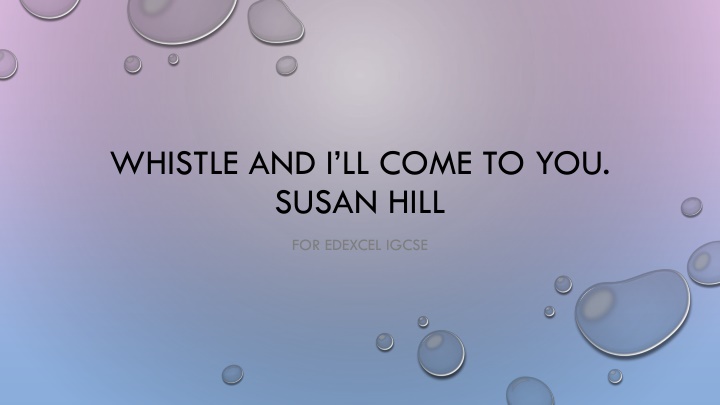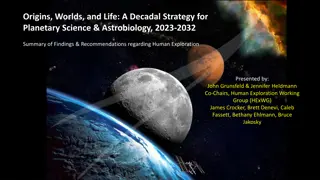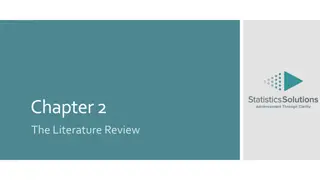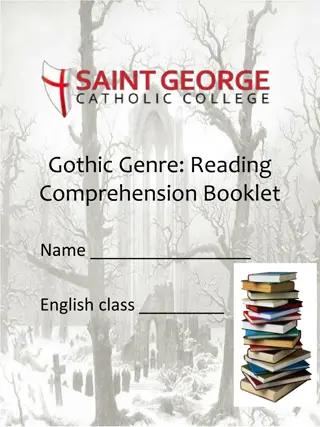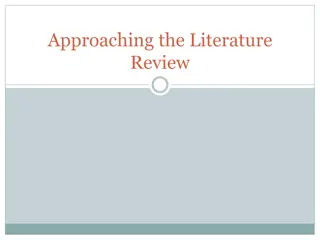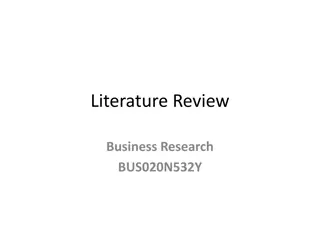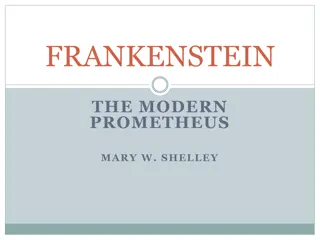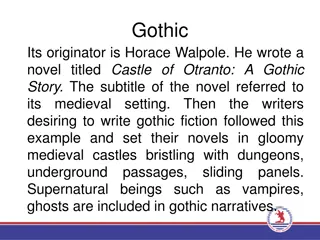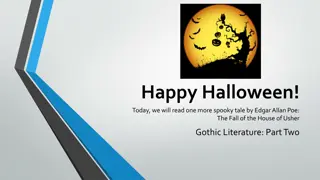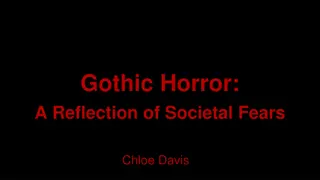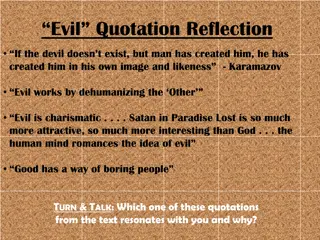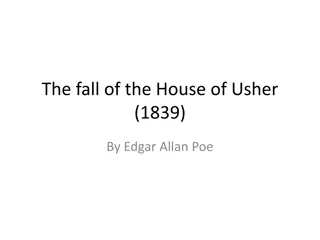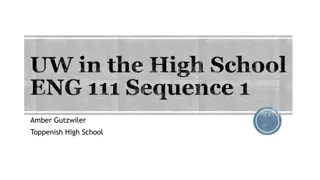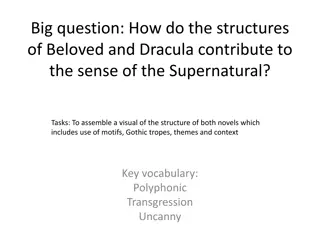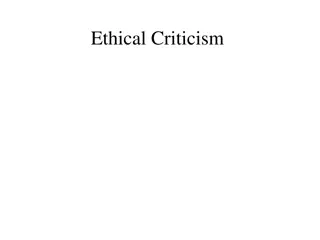Features of Gothic Literature: An Exploration
Dive into the characteristics of Gothic literature including setting, characters, style, narrative voice, and more, through a detailed analysis of a passage from "Whistle and I'll Come to You" by Susan Hill. Discover how elements like pathetic fallacy and structure are utilized to create mood and effect, and explore examples that illuminate key Gothic themes and language techniques.
Download Presentation

Please find below an Image/Link to download the presentation.
The content on the website is provided AS IS for your information and personal use only. It may not be sold, licensed, or shared on other websites without obtaining consent from the author.If you encounter any issues during the download, it is possible that the publisher has removed the file from their server.
You are allowed to download the files provided on this website for personal or commercial use, subject to the condition that they are used lawfully. All files are the property of their respective owners.
The content on the website is provided AS IS for your information and personal use only. It may not be sold, licensed, or shared on other websites without obtaining consent from the author.
E N D
Presentation Transcript
WHISTLE AND ILL COME TO YOU. SUSAN HILL FOR EDEXCEL IGCSE
GOTHIC LITERATURE A RECAP THE FOLLOWING ARE FEATURES OF GOTHIC LITERATURE. CAN YOU ADD TO THE LIST? READ THE PASSAGE AND ANNOTATE WITH A G IN YOUR MARGINALIA EACH TIME YOU FIND ONE OF THESE TYPICAL FEATURES. SETTING: CASTLES, ISOLATED LOCATIONS, LARGE HOUSES, POSSIBLY EMPTY, UNDERGROUND CAVERNS, RELIGIOUS BUILDINGS CHARACTER: A RATIONAL PROTAGONIST, WOMEN THREATENED OR IN DANGER, STRANGE LOCALS WHO LACK THE SCIENTIFIC APPROACH OF THE PROTAGONIST, POWERFUL MEN WHO ABUSE THEIR POWER PRTAGONIST ENTERS DANGER AGAINST ADVICE, SUPERNATURAL EVENTS, PROPHECIES, ENTRAP STYLE: VOCABULARY CREATES A SEMANTIC FIELD OF FEAR, TERROR OR DANGER
NARRATIVE VOICE THE NARRATOR IS THE PROTAGONIST OF THIS PASSAGE. WHAT I S THE TECHNICAL TERM FOR THIS KIND OF WRITING? THE .. PERSON HOW RELIABLE IS THIS FORM OF NARRATION? CAN THE NARRATOR KNOW EVERYTHING OR MUST WE BE CAREFUL WHEN WE READ THEIR OPINIONS?
PATHETIC FALLACY YOU WILL HAVE HEARD THIS TERM BEFORE: HTTPS://LITERARYDEVICES.NET/PATHETIC-FALLACY/ PATHETIC FALLACY IS A KIND OF PERSONIFICATION THAT GIVES HUMAN EMOTIONS TO INANIMATE OBJECTS OF NATURE FOR EXAMPLE REFERRING TO WEATHER FEATURES REFLECTING A MOOD. PERSONIFICATION, ON THE OTHER HAND, IS A BROADER TERM. HOW DOES HILL USE THE WEATHER IN THIS PASSAGE TO CREATE MOOD AND EFFECT? Jonathan Peel 2017
STRUCTURE ALTHOUGH AN EXTRACT FROM A LONGER NOVEL, THERE IS A CLEAR INTERNAL STRUCTURE TO THIS PASSAGE. READ THE PASSAGE AGAIN AND DECIDE WHERE THE ACTION CREATES A STRUCTURE TO THE PASSAGE. PROTAGONIST READS, FALLS ASLEEP, IS WAKENED, NATURE IS IN TURMOIL, HEARS A CRY, INVESTIGATES, RECOVERS.
EXAMPLES TO FIND. 1: GOTHIC THEMES Theme Example comment isolation .. Quite alone and exposed, bearing the brunt of the winter after winter of gales Exposed suggests vulnerability of the isolated house. The vulnerability is enhanced by the use of Pathetic Fallacy to describe the weather. supernatural Fear A sense of the past Rational protagonist
EXAMPLES TO FIND 2: LANGUAGE/STYLE Technique Example comment Figurative language Desperation and anguish Not only the pain in the cry but also the terror Pairs But what was real? Shows doubt in the narrator s mind. Questions Howling darkness Emotive adjectives Short sentences images
